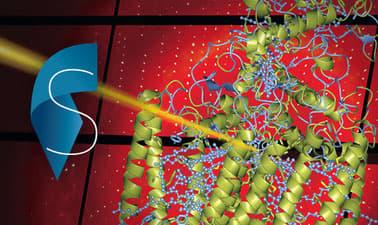MOOC List is learner-supported. When you buy through links on our site, we may earn an affiliate commission.

MOOC List is learner-supported. When you buy through links on our site, we may earn an affiliate commission.
This second of two sister courses is pitched at a level to provide valuable insights to a scientifically diverse audience into the broad spectrum of methods that use synchrotrons, including diffraction and elastic scattering; absorption, fluorescence, and photoelectron spectroscopies; and various imaging techniques, including tomography, coherent lensless imaging, and ptychography.
What you’ll learn:
- Elastic scattering and diffraction
- X-ray spectroscopies
- X-ray tomography
- Lensless imaging techniques
Syllabus
Week 1: Diffraction and scattering basics and theory
Introduction, including examples; basic concepts in crystallography, elastic scattering, and diffraction including the phase problem and how this can be resolved. New approaches in macromolecular crystallography, including artificial intelligence/machine learning.
Week 2: Diffraction techniques
Single-crystal diffraction (Laue method and rotation method), powder diffraction, surface diffraction, small-angle x-ray scattering. x-ray reflectometry.
Week 3: Aspects of x-ray spectroscopy theory and absorption spectroscopy
Energy levels, bonding, energy bands, selection rules for dipole transitions, Fermi's Golden rule. Absorption techniques, including XANES, STXM, PEEM, and EXAFS.
Week 4: X-ray emission spectroscopies and electron spectroscopies
X-ray fluorescence, resonant inelastic x-ray scattering, x-ray photoelectron spectroscopy ambient-pressure XPS, x-ray photoelectron diffraction, angle-resolved photoelectron spectroscopy, hard x-ray variants of photoelectron spectroscopies.
Week 5: Tomography and other full-field x-ray microscopies
X-ray tomography basics, including back projections, Radon transforms, and the Fourier slice theorem. Practical considerations. Phase-contrast tomography. Fast tomography. Dark-field and Zernike microscopies.
Week 6: Lensless imaging and x-ray photon correlation spectroscopy
Speckle. coherent x-ray diffractive imaging, ptychographic tomography and laminography. Higher-dimensional imaging. X-ray photon correlation spectroscopy.
MOOC List is learner-supported. When you buy through links on our site, we may earn an affiliate commission.
MOOC List is learner-supported. When you buy through links on our site, we may earn an affiliate commission.
